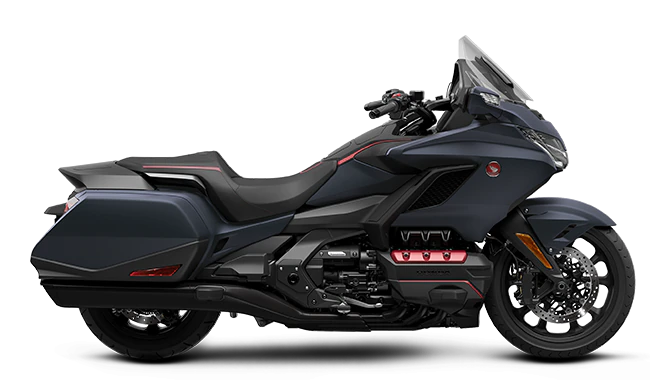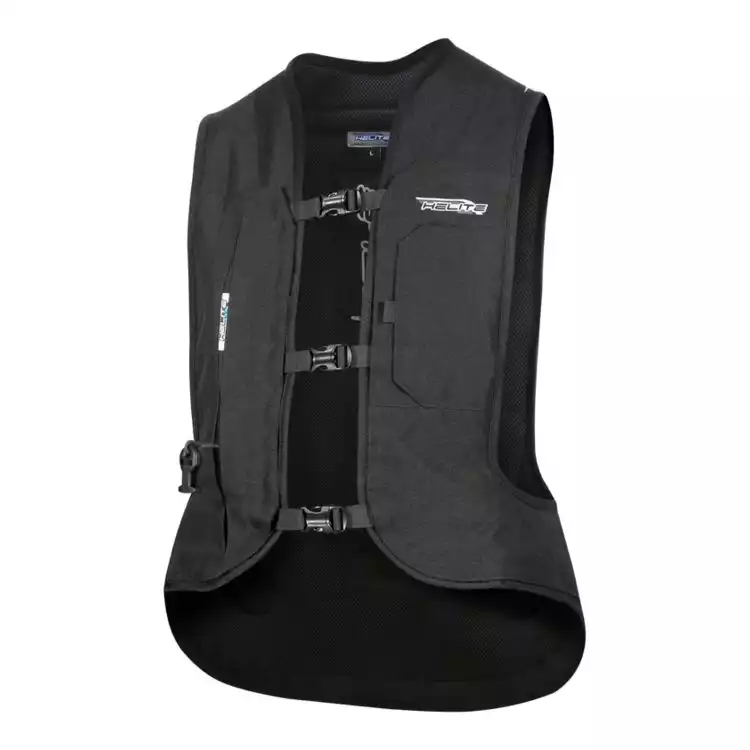Safety is one of the biggest concerns on a motorcycle. As a result, most riders have a lot of questions about motorcycle features and gear that increase security.
For those new to riding, it can sometimes be surprising how much motorcycle safety differs from car safety, airbags being one of the biggest examples of this.
Do Motorcycles Have Airbags?
No, motorcycles don’t have airbags. The only exception is the Honda Goldwing, which has come with an airbag option since 2006.
Why Don’t Motorcycles Have Airbags?
The primary reason motorcycles don’t have airbags is simply space. Most motorcycles don’t even have room for extra indicators and cockpit instruments, so fitting an airbag in there is basically impossible. It would limit the necessary space for the fuel tank and other essential parts.
Additionally, an airbag wouldn’t be as effective on a motorcycle as a car.
In a car, the airbag cushions you so that you don’t slam into the dashboard or steering wheel of the vehicle. In a motorcycle, this usually isn’t a problem. Instead, motorcycle riders are flung from the bike.
They might hit something in front of them like a car or tree, but this is less predictable than in a car, making an airbag less of a necessity.
Plus, an airbag needs something firm behind it to work correctly. In a car, it has the entire engine block to press against, but that’s not the case on a motorcycle.
A Note on the Honda Goldwing

Currently, only one motorcycle is equipped with an airbag: the Honda Goldwing.
Honda developed the system in 2005 after data showed that nearly 70% of motorcycle accidents causing injury or death were frontal collisions.
The idea is that the airbag slows the rider down as they are flung forward, decreasing the chance of severe injury when impacting an obstacle in front of the motorcycle, like a car or even the road.
The Goldwing is one of the biggest motorcycles out there, with an engine over 1800cc in capacity. It also has a large cockpit, making an airbag system more practical and important.
Still, Honda has added additional tether straps to the frame that anchor the airbag. It’s also only designed to deploy in frontal collisions, not side or rear collisions, where it would serve no purpose and possibly even be a danger.
After the 2006 Goldwing came out, Honda stated they would develop airbag systems for other models, but so far, that hasn’t happened.
What About Airbag Vests?
There’s a better way to get the same safety as a car airbag system without having one installed in the motorcycle: an airbag vest.
This protective garment looks more or less like any other jacket or vest, and you put it on the same way.
However, when you have an accident, various bladders rapidly fill up with CO2 to cushion you against, well, whatever you hit. Most have bladders around the shoulders and elbows, with some providing back protection.
Studies have found that these vests slow your forward momentum by around 60 percent, reducing head trauma by about 80 percent.
My Recommendation: Helite Turtle 2 Airbag Vest
 Helite Turtle 2 Airbag Vest
Helite Turtle 2 Airbag Vest
If you want maximum safety on your motorcycle, consider this airbag vest. Not only does it have a reliable trigger that deploys the airbags in 0.1 seconds, but it's available in hi-viz yellow for added visibility.
How to Be Safe Without Airbags
Motorcycles are more dangerous than cars. It’s just a fact. However, even without airbags, you can significantly improve your riding safety by taking a few straightforward measures.
Wear a Helmet
The most important passive safety features in a car are seatbelts and airbags. Many people assume the same would be true for motorcycles, but motorcycle safety is much different.
Instead, a helmet is the most crucial motorcycle safety feature. Ensure you have a safe helmet that fits correctly and meets the highest safety standards like SNELL.
Wear Other Safety Gear
If you want the same safety that airbags provide in a car, the best way is to wear an airbag vest or airbag jacket. On top of that, there’s a lot of other gear that will protect various vulnerable parts of your body in case of a crash, such as:
- Armored jackets and armored hoodies
- Motorcycle boots
- Elbow and knee pads
- Reflective vests
- Motorcycle gloves
- Goggles
Take Care of Your Motorcycle
A good way to stay safe is to maintain your motorcycle, especially its passive security features that keep you secure the way airbags do in a car.
Most importantly, check that your brakes are working correctly before each ride and the pads are changed as necessary.
Also, make sure to check and maintain:
- Tire pressure
- Lights and signals
- Clutch and transmission
- Fluid levels
Ride Smart
Passive safety features like airbags are just a small part of safety. What’s more important are active safety practices on your part. These include:
- Checking the weather before your ride and not riding in rain or snow.
- Not riding if you’re intoxicated.
- Not riding if you’re emotionally stressed and distracted.
- Staying relaxed and focused.
- Driving defensively and assuming other drivers may not see you.
- Paying attention and staying aware of your surroundings.
Crash Correctly
It might seem strange to think there’s a right way to crash and a wrong way, but there is. Most importantly, you want to fall with the bike, not over the top of it, which will send you into the center of the collision and/or make your impact with the ground that much harder.
However, crashing correctly is a whole process:
(Disclaimer: I am not a driving instructor or professional driver. The following advice is based on my personal experience learning to ride and riding motorcycles.)
- Slow down. This may seem obvious, but it isn’t. Generally speaking, you should actually accelerate your motorcycle out of danger. However, if you’re positive you’re going to crash, slowing down will minimize the force of the impact.
- Put the motorcycle down before you crash. You’re going to hit the ground anyway, so do it on your terms. Tip the bike onto the ground so that it slides into the other vehicle rather than hitting head-on. And as I mentioned, you should fall with the bike as you do it.
- Fall off. This part should be easy, right? Once you’ve fallen with your bike, let go of it so that it keeps sliding toward the collision, and you don’t.
- Go limp. Relax your body as much as you can. If you tense up, you’re more likely to suffer serious injury.
- Get up calmly. Many people try to get to their feet while they’re still moving. This could injure your legs and cause you to fall. So be calm, breathe, and get up when you’re stable.
- Use common sense. Situations are always unique and have their own risks. For instance, just because I said to get up calmly doesn’t mean you shouldn’t jump out of the way if a semi-truck is headed for you.
Even though motorcycles don’t have airbags, that doesn’t mean you can’t minimize the danger of riding. With passive safety gear and active safety practices, riding a motorcycle can be fun and secure.